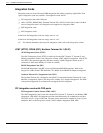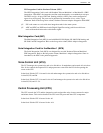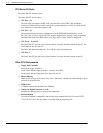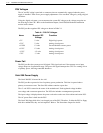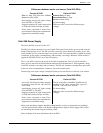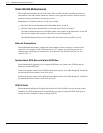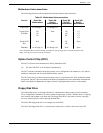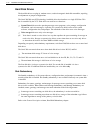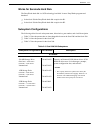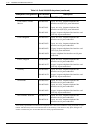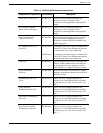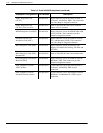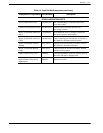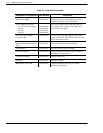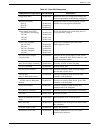
2-16 Installation and Maintenance Volume
Octel 200/300 S.4.1
PB60019−01
Hard Disk Drives
The hard disk drives are plug-in, random access, read/write magnetic hard-disk assemblies, requiring
no adjustments or jumper configurations.
The Octel 200/300 uses SCSI technology hard disk drives that interface to a single SCSI bus. This
bus is controlled by the VCU. Disk drives are used for two functions:
- System/Voice disks store the operating message server programs, voice prompts, configuration
information, and voice messages. A portion of a system/voice disk is reserved for system
software, configuration data, and prompts. The remainder of the drive stores voice messages.
- Voice storage disks store only voice messages.
. Voice data is stored on voice drives in a way that equalizes the space remaining for storage on
each voice drive. Storage on system/voice drives occurs when there are no voice-only drives
or when those drives have less than 20MB available storage.
Depending on capacity and redundancy requirements, each Octel 200/300 can have one or more hard
disk drives.
The Octel 200 can contain from one to three hard disk drives in slots B2, B3, and B4.
- The maximum disk storage 513 hours of voice storage.
The Octel 300 can contain from one to six hard disk drives in slots B3, B4, C1, C2, C3, and C4.
- The maximum disk storage is 1068 hours of voice storage.
The first disk drive is always a system/voice disk. If a second disk is installed it is also a
system/voice disk. If additional disks are installed they are voice disks only.
Disk Redundancy
Hot Standby redundancy of all system software, configuration data, and prompts is automatic when a
second system disk is installed. Hot Standby redundancy is not available when only one system disk
is installed.
Redundancy for names, greetings, and messages for message servers containing two or more disk
drives is also available. When Names and Greetings Redundancy, and Message Redundancy are
installed, names, greetings, and messages are made redundant in the following manner.
- In message servers containing two disk drives, the redundancy is on the second drive.
- In message servers containing more than two disk drives, storage of the redundant copy follows
the same algorithm as storage of the primary voice/fax data.
Refer to the Feature Description volume, Hard Disk Redundancy chapter.



